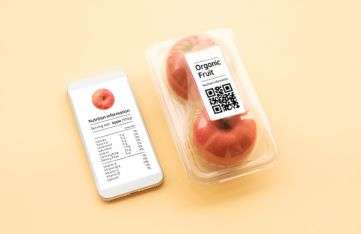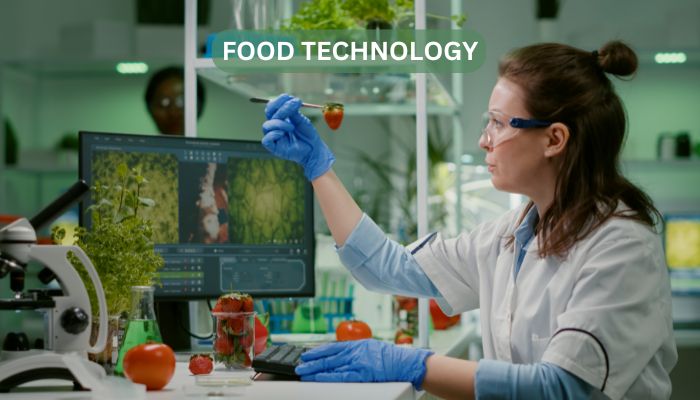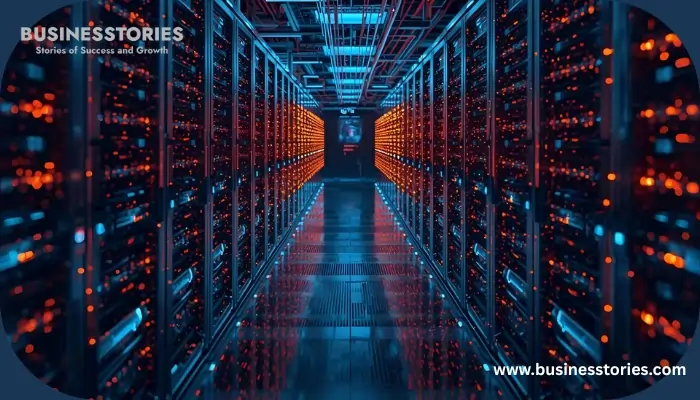Our relationship with food is being fundamentally rewritten by technology. Everything from how food is grown and processed to how it ends up on our plates, food technology sits at the forefront of a new future for what we eat. These innovations are finding solutions to pressing issues like sustainability, food security, and health. Below are the top seven trends in food tech you should know about.
Why Food Technology Matters Today
Food technology has become necessary for a age of population increase and environmental issues. This plays a part in food safety, enhances nutrition, and minimizing waste, making it the backbone of modern society. With innovative technologies, the food industry is preparing for the future. Additionally, these innovations are providing consumers with healthier and more sustainable food options for a brighter future.
Also Read: What is the New Technology for CCTV Cameras in 2024?
Emerging Trends in Food Technology
1. Plant-Based and Alternative Proteins in Food Technology
The demand for plant-based and alternative proteins has surged as consumers become more health-conscious and environmentally aware. These innovations include:
- Plant-Based Meat Substitutes: Companies like Beyond Meat and Impossible Foods are creating plant-based products that mimic the taste and texture of meat.
- Lab-Grown Meat: Also known as cultured meat, this technology involves growing animal cells in a lab to produce meat without slaughtering animals.
- Protein from Insects: Though unconventional, insect-based protein is gaining popularity due to its high nutritional value and low environmental impact.
They are not only environmentally friendly but also ethical alternatives to conventional meat production. In addition, they lower greenhouse emissions and save natural resources, addressing a major aspect of globally fighting climate change.
2. Smart Packaging for Food

Smart packaging is revolutionizing the way food is stored and consumed. This technology incorporates sensors and indicators that monitor:
- Freshness: Packaging that changes color to indicate spoilage.
- Temperature: Alerts that ensure food is kept at the right temperature during transit.
- Nutritional Information: QR codes on packaging providing detailed insights into ingredients and health benefits.
Smart packaging is a good thing because it will help extend the shelf life and also provide consumer confidence in food safety. The system is also critical to minimizing food waste by allowing consumers to assess whether their foodstuffs are spoiled.
3. 3D Food Printing
Imagine printing your favorite dish at the push of a button. 3D food printing is turning this dream into reality. Applications of this technology include:
- Customizable Meals: Perfect for catering to dietary restrictions and personal preferences.
- Sustainability: Reducing food waste by utilizing ingredients efficiently.
- Novelty: Creating intricate and unique designs for gourmet presentations.
Although 3D food printing is in its infancy, it has huge potential for innovation in the culinary space. It also holds great potential in industries such as healthcare, where it can prepare meals according to a patients specific nutrition needs.
4. Food Waste Reduction Technologies
Food waste is a global problem, and technology is stepping in to address it. Innovations include:
- Food Recovery Apps: Platforms like Too Good To Go connect consumers with surplus food from restaurants and grocery stores.
- Composting Technologies: Devices that convert food scraps into compost within hours.
- Edible Packaging: Packaging made from biodegradable materials that can be safely consumed.
These technologies are not only reducing waste but also contributing to a circular economy By turning waste into useful materials, they are encouraging businesses and consumers to follow more eco-friendly habits.
5. Blockchain in Food Safety
Blockchain technology is enhancing transparency and traceability in the food supply chain. Its benefits include:
- Tracking Food Origins: Consumers can trace the journey of their food from farm to fork.
- Preventing Food Fraud: Ensuring authenticity and quality of products.
- Improving Recalls: Faster and more efficient identification of contaminated items.
Blockchain is helping to create trust between consumers and food producers by making things more transparent. This is especially useful in global supply chains, where ensuring food safety and authenticity can be challenging.
6. Personalized Nutrition
As the concept of one-size-fits-all diets becomes obsolete, personalized nutrition is gaining momentum. Using data from genetic tests, wearable devices, and health apps, this trend offers:
- Customized Meal Plans: Tailored diets based on individual health goals and genetic predispositions.
- Targeted Nutraceuticals: Supplements designed to address specific deficiencies or health issues.
This technology empowers individuals to take control of their health through better dietary choices. Additionally, it is promoting a deeper understanding of the link between food and overall well-being.
7. Sustainable Food Processing
Sustainability is at the heart of modern food technology. Innovative processing methods are minimizing environmental impact by:
- Reducing Energy Use: Using renewable energy sources for food production.
- Water Conservation: Technologies that require less water in processing.
- Cleaner Labels: Eliminating artificial additives and preservatives while maintaining product quality.
These practices are ensuring that food production remains eco-friendly without compromising quality or taste. Moreover, they are driving innovation in packaging and distribution, making the entire supply chain more sustainable.
Also Read: What is the New Technology for CCTV Cameras in 2024?
What These Trends Mean for the Future
The advancements in food technology are more than just trends; it’s changing the way we grow, eat, and view food in the future. These new ideas aim to create a world where food is better for our health, kinder to the planet, and available to everyone. Whether it’s through custom diets, clever packaging, or eco-friendly methods, food technology is making a big difference.
Moreover, these technologies are helping to connect old traditions with new ideas, making sure that traditional cooking methods are kept alive while also adopting modern improvements. As these trends grow, they will keep shaping how people shop, how businesses operate, and the rules that countries follow worldwide.
Conclusion
It is therefore important to ensure that one is well informed about if the one latest is trends to in have the an food idea industry of the future blockchain of systems, the such food new industry. concepts From are plant-based being proteins used to Thus, to with solve the some appearance of the these world’s changes, greatest but we challenges. just, are environmentally on friendly the and right safe track food. to It select is not only therefore tasty, important that both the business world and the general public engage with these trends in order to bring about a better future for future generations.



